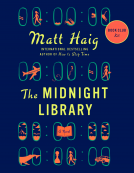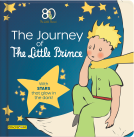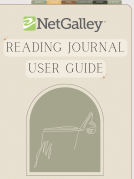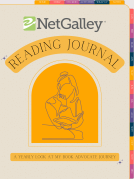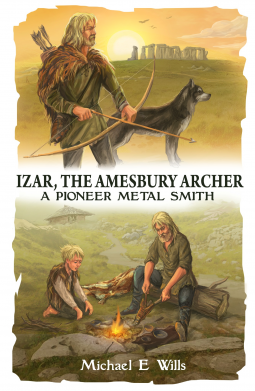
Izar, The Amesbury Archer
A Pioneer Metal Worker
by Michael E. Wills
This title was previously available on NetGalley and is now archived.
Send NetGalley books directly to your Kindle or Kindle app
1
To read on a Kindle or Kindle app, please add kindle@netgalley.com as an approved email address to receive files in your Amazon account. Click here for step-by-step instructions.
2
Also find your Kindle email address within your Amazon account, and enter it here.
Pub Date Jun 30 2021 | Archive Date Jun 08 2022
Talking about this book? Use #IzarTheAmesburyArcher #NetGalley. More hashtag tips!
Description
A Skeleton that tells a story!
Amesbury, just two miles from Stonehenge, is regarded as one of the oldest towns in Britain, with evidence of habitation for over 5000 years.
In 2002, a male skeleton was discovered there. It had lain undisturbed for almost that length of time.
Archaeological research showed that the man was born almost a thousand miles from where he died. He had lived in the period when the Stone Age was ending and the age of metal was dawning. The numerous items buried with him give tantalising clues about his way of life. In addition to archery equipment, there was evidence that he had been a pioneer metal worker.
This is the story of how he could have lived and died.
Advance Praise
Amesbury, just two miles from Stonehenge, is regarded as one of the oldest towns in Britain, with evidence of habitation for over 5000 years. In 2002 a male skeleton was discovered in there. It had lain undisturbed for almost that length of time. Archaeological research showed that the man was born almost a thousand miles from where he died. He had lived in the period when the Stone Age was ending and the age of metal was dawning.
The numerous items buried with him give tantalising clues about his way of life. In addition to archery equipment there was evidence that he had been a pioneer metal worker.
This is the story of how he could have lived and died.
“Before I leave may I see the work you do here with the copper?” asked the visitors’ spokesman.
The leader hesitated for a moment, considering the request and then said, “Izar will show you what he makes, but he will not tell you of the way it is done, for he alone knows this. He has it as a gift from the Sun God.”
The year that Izar has a dot on the finger of each hand, with four of his fingers showing two dots, is the one when his life changes forever. Separated from his father and brother by fog, and with dogs from an unfriendly tribe on his heels, Izar’s path takes a new turn when he tumbles from a cliff and lands heavily at the bottom.
When the tribe finds him, the tribe’s leader, Rab, and his woman, Stin, decide to try to heal Izar’s injuries. Stin must remove the broken pieces of bone from Izar’s leg if the boy is to have any hope of surviving, but the break and the procedure leave Izar crippled, and what use is a cripple to a tribe? However, Izar grew up making arrows, and his carving skills are quickly noticed by Rab. With the tribe’s secrets about melting the stone in need of a new process to mould the new metal, Izar may be able to earn his keep and save his own life.
Izar, The Amesbury Archer: A Pioneer Metal Worker by Michael E Wills is a novel that is as rich in historical detail as it is in story.
Izar is an incredibly brave character, who not only has to contend with the pain and difficulties of breaking and subsequently losing his kneecap but also of finding a way to show his worth to the tribe that took him in. If he was no use to them, he was simply an idle mouth, taking their food and giving nothing in return. As he starts his healing process, he is given the task of looking after the very same dogs that scared him into falling off the cliff. While the dogs may start to regard him as a friend, not a foe, the other members of the tribe are not as easily persuaded. Being unable to walk properly, Izar quickly becomes the subject of amusement and bullying from Rab’s sons, who see him as expendable and a threat to their tribe.
The idea that the injured or physically disabled were useless is explored in great detail in this novel. Alongside Izar, there is a young boy in the tribe, known as Lin, who has an arm he cannot use. This means that, unlike the other children in the tribe, he cannot work and he is, therefore, treated as inferior. Unfortunately, despite the friendship Lin forms with Izar, he does not have the unique skill that Izar does to carve objects and create arrowheads, which means that he also has no way of earning his keep. The way that both Izar and Lin are treated is appalling. In the world that Wills has depicted, it is imperative that everyone can pull their own weight. If they cannot, then they are nothing more than a burden.
The Stone Age, or indeed, the start of the Bronze Age, was a time very different from the modern-day. Human lives were seemingly worthless, and if a person was a threat or could no longer be an active participant of the tribe, then they faced either leaving the safety of the tribe, or execution. Izar is very aware of this, and he constantly attempts to demonstrate how important and how useful he is to those around him. However, as Izar grows older, the need for respect and to be necessary to others becomes not so much about survival but instead he basks in his accomplishments. Izar can create something that many tribes do not have—copper.
Izar’s ability to not only extract copper from the rocks, but also to mould it into knives, takes him on a great journey—one that began with him, once again, running for his life, and transforms into a trip across the water, far from his home, towards the Duran tribe. The differences between the tribes Izar is used to and the Duran tribe are stark. The Duran tribe, and the Duran Master’s chief warrior, Radan, are not the kind of tribe to peacefully accept shelter and a meal, but a people who took what they wanted with little care for the consequences of those who found themselves in their path. Izar is disgusted when Radan shows him around this new home and discovers that the tribe uses slave children to dig holes for their construction, and sacrifice young children to the spirit of the sun. Nevertheless, the tribe is desperate for Izar’s copper creations to further develop their status and homes, and Izar quickly finds his place among the strange new tribe.
The historical detail in this novel has to be commended. It is clear that Wills has put hours of research into making this novel as historically accurate as possible, and that is a feat in itself with the lack of historical resources for the era. This book is based on the life of a man found in an early Bronze Age grave, exploring what his life may have been like and the reasons for the objects in the grave. The writing of this novel required the use of logic and imagination, as well as a passion for the era, to weave together the story of Izar, and how his life played out, and this has been accomplished exceptionally well.
Izar, The Amesbury Archer: A Pioneer Metal Worker by Michael E Wills is a novel that not only explores the processes of working metal in the early Bronze Age and the uses that different tribes would have had for copper, but it is also an intensely enthralling tale. Izar’s life has been moulded around what little is known about him, and the result is a novel full of intense detail with a gripping narrative.
I Highly Recommend
Review by Ellie Yarde.
The Coffee Pot Book Club.
Featured Reviews
 Becky B, Educator
Becky B, Educator
An interesting look story that chronicles what life might have been like for a boy living thorough the changes brought on by the beginning of the Bronze Age. Wills weaves a well-imagined tale based on the bones (and grave) of a man buried near Stonehenge.
Izar, The Amesbury Archer is an accessible fictionalized narrative of the life of an early bronze age metalworker based on extant archaeological evidence, written by Michael E. Wills. Released 21st June 2021, it's 250 pages and is available in paperback, audio, and ebook formats.
This is a very well imagined story based on archaeological evidence discovered in a burial cache in 2002 in Amesbury, near Stonehenge which dates from circa 2300 B.C.E. The author writes a compelling and fascinating story about the possible life and history of the man he calls Izar. Tests performed on the tooth enamel of the actual skeleton support an origin in the Alps, and the author skillfully weaves a story which explains the physical characteristics (deformed and missing knee, tooth enamel showing a birthplace and early childhood in central European Alpine region, and the artifacts he was buried with) alongside an entertaining and plausible story.
The language is simple and direct and would be appropriate for older middle grade kids through teenagers. This would make a superlative selection for public or school library acquisition, library reading groups or classroom reading circles, as well as the home library. Although important to remember that it's a fiction account, it does a very good job of explaining the physical realities of the gravesite, skeleton, and grave goods found in 2002. The book also includes a number of photographs and maps including a photo recreation of the burial site with artifacts in situ.
Five stars.
Disclosure: I received an ARC at no cost from the author/publisher for review purposes.
Readers who liked this book also liked:
Silvia Moreno-Garcia
Historical Fiction, Literary Fiction, Sci Fi & Fantasy
Rachel Joyce
Historical Fiction, Literary Fiction, Women's Fiction
Paul Stamets
Health, Mind & Body, Outdoors & Nature, Science



